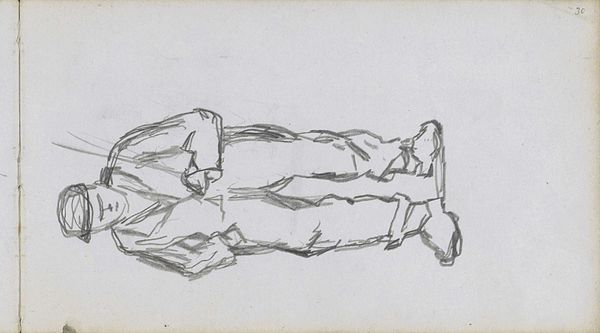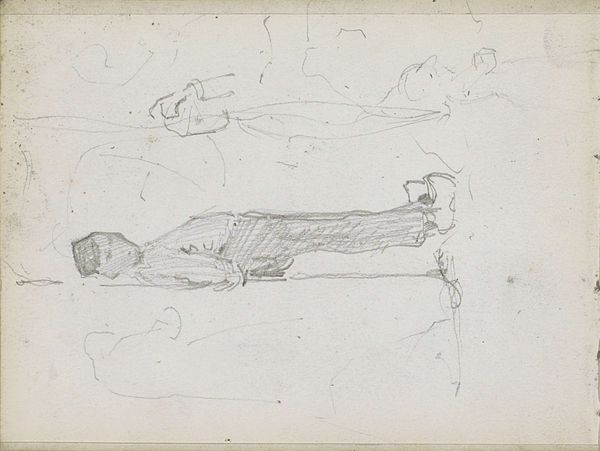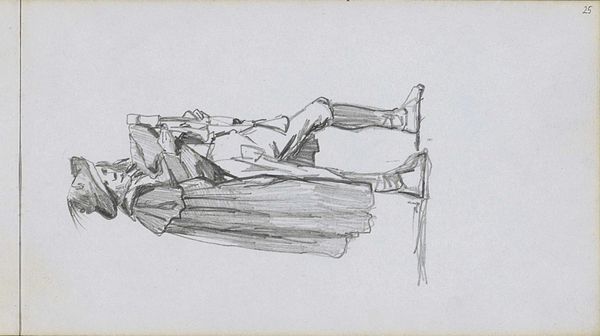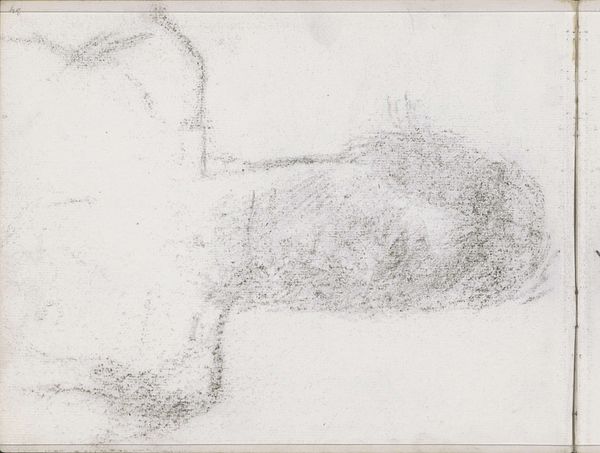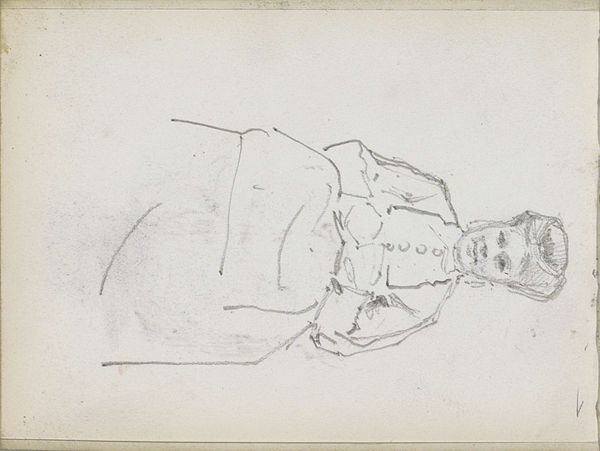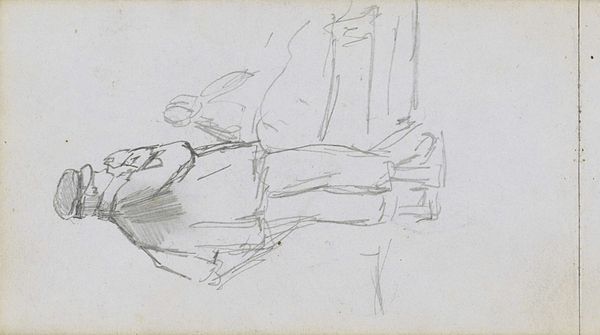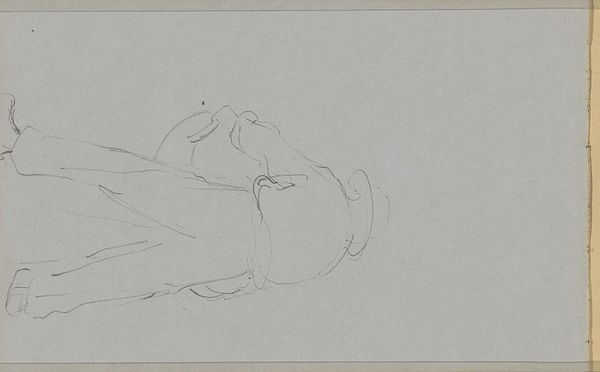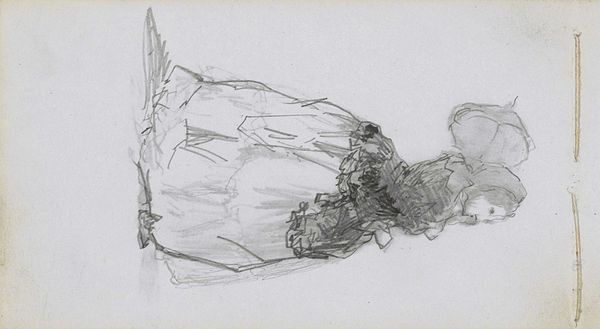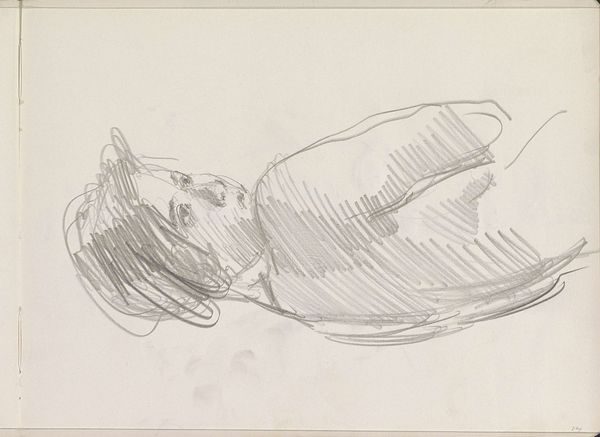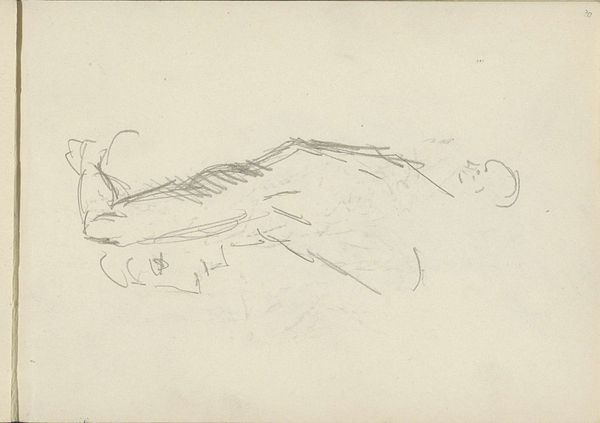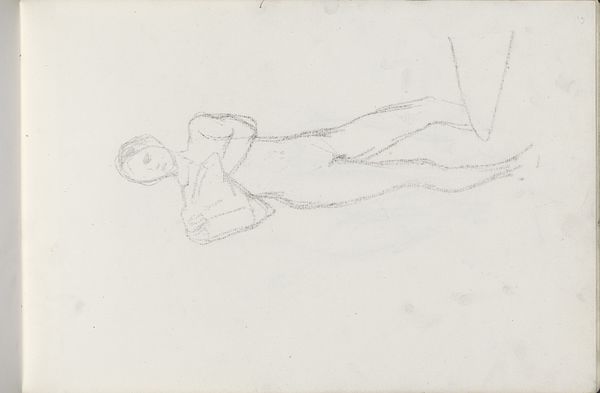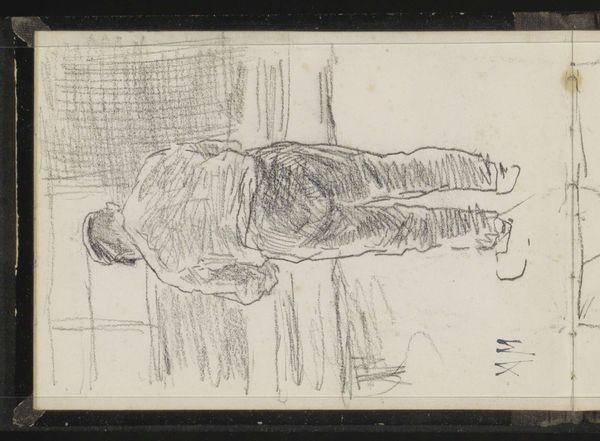
drawing, pencil
#
portrait
#
drawing
#
impressionism
#
figuration
#
pencil
Copyright: Rijks Museum: Open Domain
Curator: Let's discuss "Hoed en een staande vrouw," or "Hat and a Standing Woman," a pencil drawing crafted by Johan Hendrik Weissenbruch, dated sometime between 1834 and 1903. It's currently held at the Rijksmuseum. Editor: Hmm, I find this immediately intimate, like peeking into an artist's sketchbook. The lines are so sparse, just enough to suggest a form. A feeling of stillness but also movement, a study of light, perhaps? Curator: Precisely. Weissenbruch was, of course, a prominent figure within the Hague School, a group known for their commitment to realism, albeit often with a distinct atmospheric quality. Consider this sketch, with a lens grounded in material culture: The hat itself, boldly rendered in comparison to the faint figure, demands our attention. Editor: It really does, doesn't it? The hat feels almost… aggressive in its presence, overshadowing the woman entirely. Was he more interested in the object than the subject, do you think? Or is it perhaps a statement on the accoutrements of womanhood, maybe subtly critiquing the societal expectations tied to outward appearance? Curator: It’s difficult to say with absolute certainty what Weissenbruch intended. It’s valid to ponder the ways in which women's identities were historically intertwined with their attire and whether the artist seeks to emphasize the constructed nature of identity or possibly to critique its performativity. In the late 19th century, ideas surrounding female emancipation and the rise of feminist movements, certainly influenced art production. Editor: Oh, I like that thought about performativity! It definitely shifts my perception. Suddenly it feels less like a simple sketch and more like a small act of rebellion, or maybe… not rebellion, but... gentle questioning? The ghost of a figure and this assertive hat. Curator: The tension is indeed palpable. The drawing technique itself is suggestive. Weissenbruch utilizes delicate lines that barely define the woman's form, creating an ethereal presence compared to the firm, bold strokes depicting the hat. It mirrors the socio-political forces influencing the perception, representation, and, frankly, the constraint of women's bodies within society. Editor: Well, now I can't unsee the hat as a cage! Thanks a lot! Just kidding… but seriously, I'll be thinking about that for days. I came in seeing a quick sketch, and now I see this complex interplay of visibility and invisibility. Curator: That's the beauty of art, isn’t it? How a seemingly simple drawing can reveal layers of social, political, and personal meaning. I am glad we could collaboratively unlock yet another interpretation of Weissenbruch's artwork today.
Comments
No comments
Be the first to comment and join the conversation on the ultimate creative platform.
